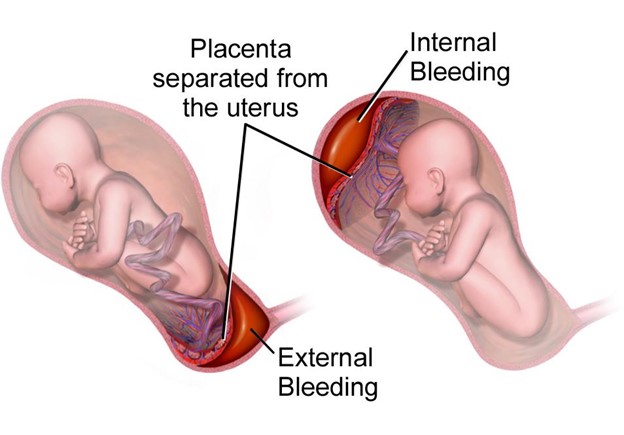During a breast examination on a 24-year-old client, the nurse notes the following findings. Which finding is of most concern and should be reported to the provider?
Both breasts have many nodules in the upper outer quadrants.
The client states she has bilateral breast tenderness with palpation.
The left breast is slightly larger than the right breast.
An irregularly shaped, nontender lump is palpable in the right breast.
The Correct Answer is D
Choice A rationale:
Having many nodules in the upper outer quadrants of the breasts is a common and expected finding in breast tissue and is not necessarily a cause for concern.
Choice B rationale:
Bilateral breast tenderness with palpation can be a normal finding, especially in young women with hormonal changes. It is not of immediate concern unless it is accompanied by other worrisome symptoms.
Choice C rationale:
Slight differences in breast size are often normal and not necessarily concerning, especially in young women whose breast development may not have fully stabilized.
Choice D rationale:
An irregularly shaped, nontender lump palpable in the breast raises concerns for a potential breast mass or tumor. This finding requires further evaluation and investigation by a healthcare provider to determine its nature and possible malignancy. Early detection of breast abnormalities is crucial for timely management and improved outcomes.
Nursing Test Bank
Naxlex Comprehensive Predictor Exams
Related Questions
Correct Answer is A
Explanation
Choice A rationale:
The nurse should report a blood urea nitrogen (BUN) level of 35 mg/dL to the provider. BUN measures the amount of nitrogen in the blood and is used to assess kidney function. An elevated BUN can indicate impaired renal function, which is a concern in preeclampsia, as it may signify reduced blood flow to the kidneys.
Choice B rationale:
Hemoglobin (Hgb) level of 15 mg/dL is within the normal range for pregnancy (normal range: 11-15 g/dL), so there is no need to report it to the provider.
Choice C rationale:
Bilirubin level of 0.6 mg/dL is within the normal range (normal range: 0.2-1.3 mg/dL), so there is no need to report it to the provider.
Choice D rationale:
Hematocrit (Hct) level of 37% is within the normal range for pregnancy (normal range: 33- 45%), so there is no need to report it to the provider.
Correct Answer is A
Explanation
Choice A rationale:

Continuous abdominal pain and vaginal bleeding in a client with a history of cocaine use are indicative of abruptio placentae. Abruptio placentae is a medical emergency where the placenta detaches from the uterine wall before delivery, leading to severe bleeding and abdominal pain. Immediate medical intervention is necessary to prevent complications for both the mother and the baby.
Choice B rationale:
Hydatidiform mole is a gestational trophoblastic disease that occurs due to an abnormal pregnancy. It is not associated with continuous abdominal pain and vaginal bleeding. Instead, clients with this condition often present with vaginal bleeding and a grape-like cluster of cysts in the uterus.
Choice C rationale:
Preterm labor involves regular uterine contractions and cervical changes before 37 weeks of gestation. While preterm labor can cause abdominal discomfort, it is not usually described as continuous abdominal pain. Vaginal bleeding is not a typical symptom of preterm labor.
Choice D rationale:
Placenta previa is a condition where the placenta covers the opening of the cervix. It can cause painless vaginal bleeding, but it is not usually associated with continuous abdominal pain. Clients with placenta previa often experience sudden, painless bleeding later in pregnancy.
Whether you are a student looking to ace your exams or a practicing nurse seeking to enhance your expertise , our nursing education contents will empower you with the confidence and competence to make a difference in the lives of patients and become a respected leader in the healthcare field.
Visit Naxlex, invest in your future and unlock endless possibilities with our unparalleled nursing education contents today
Report Wrong Answer on the Current Question
Do you disagree with the answer? If yes, what is your expected answer? Explain.
Kindly be descriptive with the issue you are facing.
